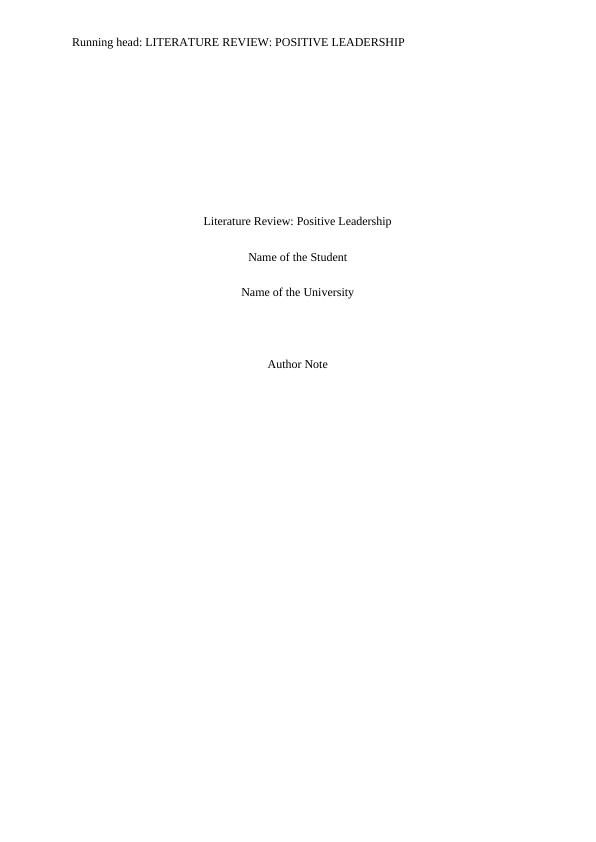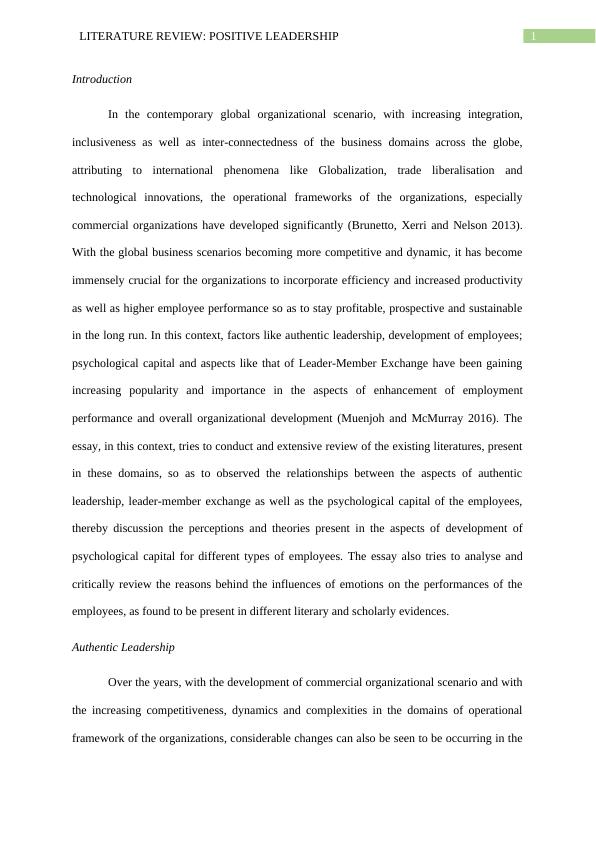Literature Review: Positive Leadership
Examine the relationship between authentic leadership, LMX, and employees' PsyCap and critically review literature on building PsyCap of different employee groups.
17 Pages4169 Words404 Views
Added on 2023-06-10
About This Document
This literature review explores the relationships between authentic leadership, leader-member exchange, and psychological capital in the contemporary global organizational scenario. It discusses the perceptions and theories present in the aspects of development of psychological capital for different types of employees and analyses the reasons behind the influences of emotions on the performances of the employees. The review also provides insights on how to develop psychological capital in organizations.
Literature Review: Positive Leadership
Examine the relationship between authentic leadership, LMX, and employees' PsyCap and critically review literature on building PsyCap of different employee groups.
Added on 2023-06-10
ShareRelated Documents
End of preview
Want to access all the pages? Upload your documents or become a member.
Analysis of Positive Leader and its Impact on Psychological Capital
|13
|3629
|336
Relationship between authentic leadership, Leader-Member Exchange (LMX) and employees’ Psychological Capital
|10
|2577
|457
Positive Leadership and Employee Psychological Capital
|13
|2779
|70
Positive Leadership Assignment PDF
|14
|3630
|135
Leadership and Employee Performance
|12
|3225
|156
Leadership and Employee Performance
|12
|3285
|196




